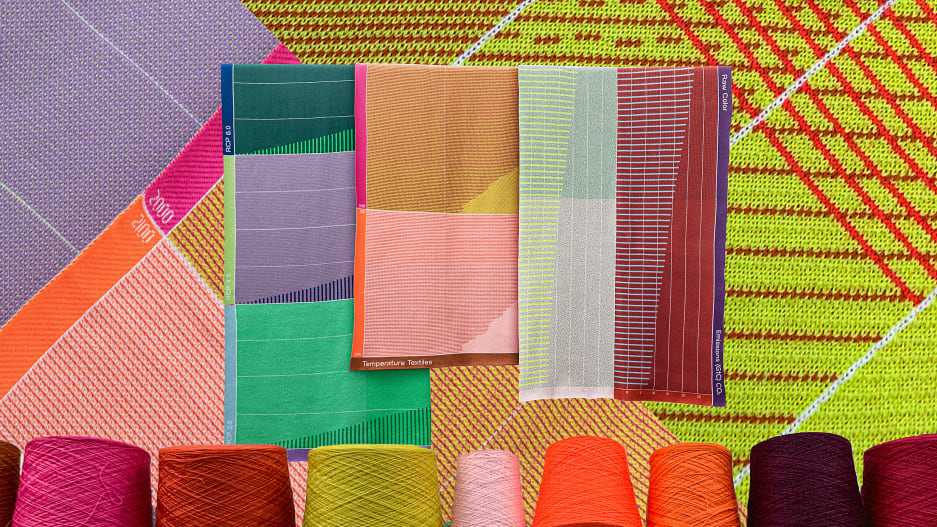These gorgeous, cozy textiles illustrate the horrifying realities of climate change

The ongoing global warming catastrophe is terrifying, but these days, we hear so much about climate change that it can be hard to wrap our minds around it.
It’s why Raw Color, a Dutch studio founded by Christoph Brach and Daniera ter Haar, wants to help make climate data more tangible. Its latest installation, Temperature Textiles, launched at Dutch Design Week, which coincides with the COP26 United Nations Climate Conference. Temperature Textiles’ series of blankets, scarves, and socks use colors and patterns to illustrate sea level rise and how hot global temperatures will become if emissions aren’t reduced.
In their work, Brach and Haar specialize in using color to convey information across various disciplines, including graphic and product design. They’ve explored how color can be used in healthcare settings to influence patients, and created colorful masks to reflect their identities as designers. With this project, they use color to translate complex climate data into patterns that are easy to grasp.
They focused on three types of information: temperature change, sea level rise, and emissions, using the most recent data gathered by the Royal Netherlands Meteorological Institute. Warm shades, like red and orange, reflect increases in temperature, while cool shades, like gray and pink, reflect the rising seas.
In the Sea Level Blanket, little gray squares against a purple background reflect the predicted sea level rise between 2000 and 2100. A pair of socks represent the sea level rise between 2020 and 2040 in a series of purple and green lines against a blue background. The Emissions Blanket and the Temperature Scarf and Blanket feature splotches of color that are both eye-catching and actual graphs that represent how the earth’s temperatures might increase.
Cleverly, all of these textiles are also designed to provide warmth, which will be necessary as climate change brings about more extreme weather patterns, including colder temperatures in many parts of the world, including the Netherlands. “These textiles strive to [raise] awareness and to provide additional warmth,” the studio explains in the Dutch Design Week catalog. “As a result the users should also be [stimulated] to lower their heating and therefore reduce their personal CO2 emission.”
To create the various products, Raw Color collaborated with two textile workshops, TextielLab and Knitwear Lab. They used a technique that creates heavy fabrics, while also reducing waste by knitting fabrics to size.
According to the most recent UN climate report, even if every country in the world radically reduces its emissions, temperatures on earth are on a trajectory to rise by 1.5 degrees Celsius over the next two decades, compared to pre-industrial levels. The question is whether we can prevent temperatures from rising even higher, which could result in even more catastrophic outcomes.
Brach and Haar believe that as time passes, we will be forced to process more and more complex news about the planet and there’s a risk of information overload—so it’s incumbent on designers to make this data digestible to the average person.